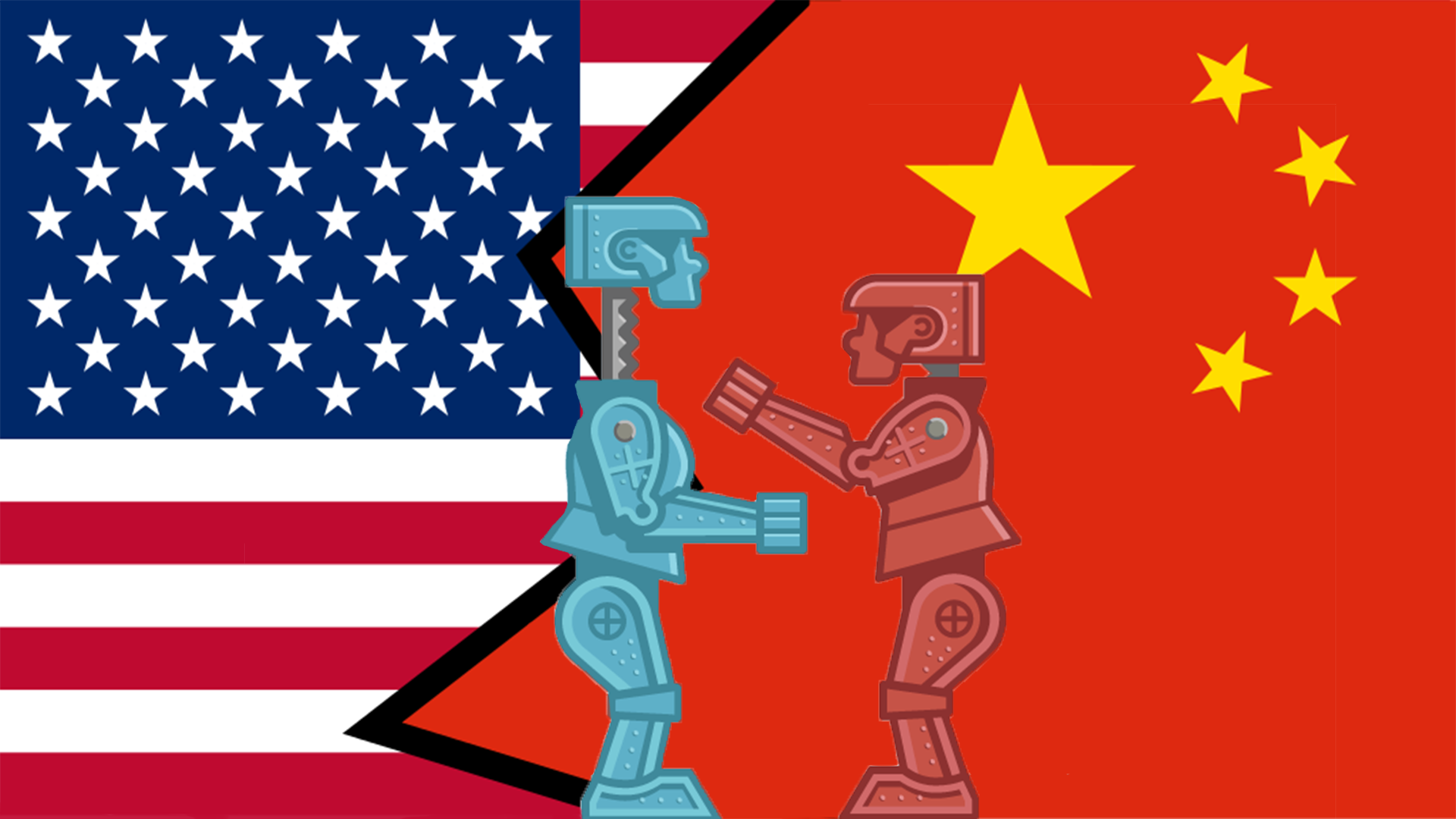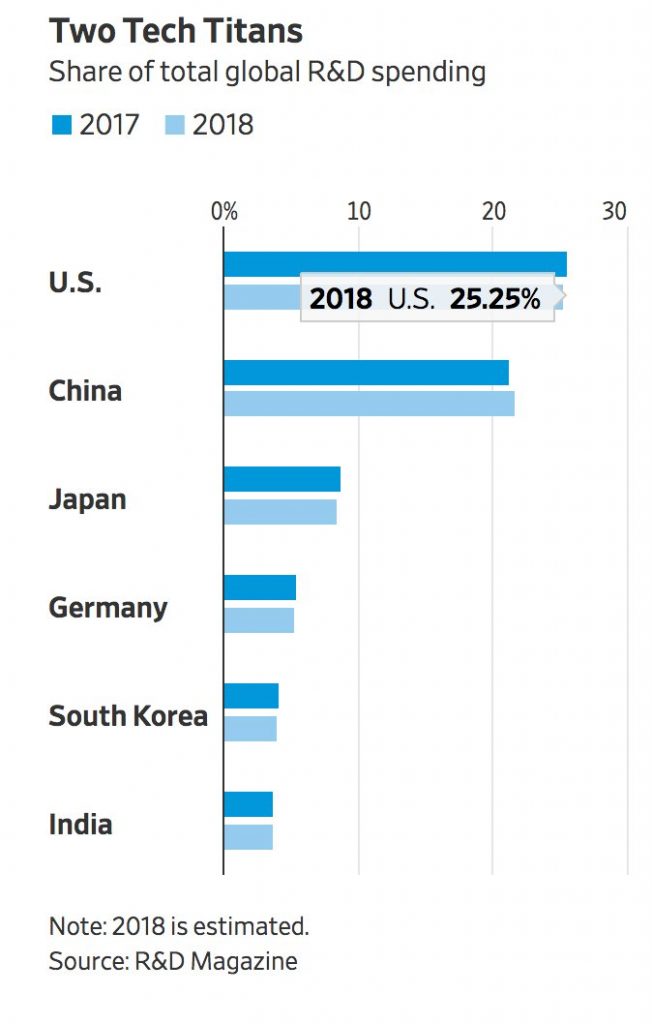
China has closed the gap in the race to develop the worlds leading AI and robotics technologies.
Special Report: China vs. U.S. in AI Growth
China demonstrated an aggressive drive to dominate the Artificial Intelligence field when its government budgeted $5 billion and private entities pledged another $2 billion of investments in AI efforts at dozens of start-ups, universities and in attracting American firms such as Google to open offices there, according to The New York Times.
Although the United States has been a leader in AI since its beginning in the 1950s and developed the science, in 2017 China closed the gap in numbers of AI programmers—and is aggressively working to pull ahead.
U.S. internet innovators have been leading the way with Google’s Open AI project and Tesla’s efforts, but the American government has done little to encourage investment and competition, despite announcing a plan to do so in 2016 in several reports released by the Obama Administration ⎯a plan that China’s government appears to have pursued, while the Trump Administration has done nothing to enact.
China views AI and machine learning as a means to lift the country out of a low-cost manufacturing economy and into economic innovation, according to an article in The Wall Street Journal. Last July, it announced that it is embarking on a “five-year plan” to become the leader in AI, creating an industry worth $150 billion by 2030, according to SFGate.com, which tracks Silicon Valley news. The American private sector has already built enormously valuable AI businesses, but what differentiates China from America is its willingness to use its authoritarian government to make a giant leap forward.
“What gives China an edge is there is more of a sense of urgency,” says Paul Triolo, a technology research manager at Eurasia Group in The Wall Street Journal article. “Last summer, China’s central government published a comprehensive plan for artificial intelligence development that aims to make the nation ‘the world’s primary AI innovation center’ by 2030.”
The country’s willingness to invade its citizens’ privacy will give it an advantage in collecting data that will be used for machine learning involving everything from facial scanners, image recognition and data analysis based on big data it can collect, whether its citizens like it or not.
The United States uses many of the same systems on a limited scale, but while it lacks the totalitarian will to move ahead of other countries, it is a magnet for talent that goes to existing companies by offering the highest salaries and recruiting locally and globally.
According to a story in Bloomberg Businessweek, Element AI, a Montreal-based tech recruiting firm, estimated that of about 22,000 Ph.D. level computer scientists around the world capable of building AI systems, only about 3,000 are available—and they command average salaries of $300,000 and up. Many of those are lured away to American firms, for now.
“Vishal Chatrath, co-founder and CEO of Prowler.io, a Cambridge, England startup that uses AI to improve things like trucking delivery routes and investment portfolios, hasn’t had trouble recruiting developers. ‘Talent hires talent,’ he says.”
Meanwhile, American high tech companies like Google, Apple, Intel and Facebook are embarking on their own AI training programs to stay competitive, according to Bloomberg.
 Despite the lack of government investment in AI, except for perhaps in defense, the United States remains the top country for AI investment at more than 25% of global research and development funding, compared to China’s 22%, according to R&D Magazine. This is partially because of Wall Street money focusing on autonomous cars, AI startup investment and the 800-pound gorilla in global technology, Google.
Despite the lack of government investment in AI, except for perhaps in defense, the United States remains the top country for AI investment at more than 25% of global research and development funding, compared to China’s 22%, according to R&D Magazine. This is partially because of Wall Street money focusing on autonomous cars, AI startup investment and the 800-pound gorilla in global technology, Google.
Will the United States maintain its dominance, however, when other countries are dedicating homegrown resources at greater rates than ever?
Countries making major AI investments include Japan, Germany, South Korea, India and Taiwan. Canada has one of the top universities for AI and its government is investing nearly a billion dollars in small businesses. American companies are investing in smaller centers in England, France and China, where talent is being grown in universities that are focusing on high-level—such as Ph.D.—training in AI. In the United States, however, currently there is a dearth of Ph.D.-level academic AI training.
According to Analytics India Magazine, few universities offer Ph.D. level training, partly because it’s such a demanding discipline, requiring “a blend of computer science, math, cognitive psychology and engineering.” Many of the leading universities—publishing the most papers—are in Europe. Three are in England, three in Holland, one is in Belgium, one is in Catalonia and a top one is the University of Edinburgh, Scotland. All of the programs are taught in English, the international language of technology.
Those statistics, however, may be misleading because of the tendency of American companies to recruit talent straight from bachelor’s degree programs. The United States still has, by far, the most universities and colleges—95 total—with AI programs, according to listings by AI International. No other country comes close. The nearest competitor is Canada with 14 universities. In addition, universities like Carnegie Mellon, Cornell and Stanford offer fully subsidized Ph.D. programs in machine learning, in full fellowships or in exchange for research and teaching assistantships.
U.S. Will Continue to Lead in Corporate Investment
Due to the status of the United States as the leader in producing AI graduates, it should retain its preeminent role for years to come, as long as Wall Street investment firms, venture capitalists and Main Street investors remain committed to funding the array of AI projects already underway. China is basically playing catch up.
The role of the United States as the world’s capital of entrepreneurship continues to be one of its greatest strengths in terms of AI, robotics and machine learning startup growth. According to the Council on Foreign Relations, U.S. entrepreneurship has been the economic driver of the country for job creation for the past 40 years. In 2011, more than 80 percent of startups receiving venture capital were in the high tech sector.
Because the United States also blocks China’s ability to steal certain technologies means it also cannot duplicate them—certain computer chips, for example. This makes it impossible for China to do what it did in other less technical areas, such as manufacturing, and beat the United States at its own game. The New York Times recently ran a story showing how Xcerra, a producer of chip-testing equipment, walked away from a deal with China because of American regulations.
The possibility that China will surpass the United States still concerns the largest investors, however⎯American companies such as Google and Amazon, according to the SFGate article:
“U.S. companies like Amazon and Google have done more than anyone to turn AI concepts into real products. But for a number of reasons, including concerns that the Trump administration will limit the number of immigrant engineers allowed into the United States, much of the critical research being done on artificial intelligence is migrating to other countries, including tech hot spots like Toronto, London and Beijing.”
So for now, the United States remains the indisputable AI leader. As China pursues its “leap forward,” it remains to be seen how much further it will be able to close the gap in the next five years, and whether the current Administration will respond to the demand for more high tech visas before the world’s AI talent turns to China instead.







Leave A Comment